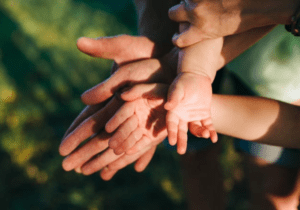Understanding Trauma Bonding
This article has been researched and written by Moni El Ramlawy. AI has not been used in producing this article.
Trauma bonding is a confusing emotional attachment that forms between a person and someone who repeatedly harms, manipulates, or mistreats them. It’s a relationship where “love” feels inconsistent. It’s a relationship fueled by cycles of abuse and intermittent kindness. This dynamic can occur in romantic relationships, family systems, friendships, and even workplaces.
So… what is “trauma bonding” really?
At its core, trauma bonding happens when abuse is paired with moments of warmth or affection. Your brain starts to think the comfort you feel after being hurt is the same as love or safety. Over time, the nervous system learns to crave those “good” moments, even if they are rare, because they temporarily soothe the pain caused by the same person. This cycle creates an emotional dependency – making it difficult for someone to leave, even when they know the relationship is harmful.
You may read this and think, how did I get stuck in this pattern? Or how did this even begin? This kind of relationship usually begins with affection and connection until criticism, neglect, manipulation, or emotional withdrawal begins. The type of abuse may be emotional, physical, or sexual. Then comes the reconciliation – apologies, affection, or small acts of kindness. Then there’s a sense of calm. The cycle then resets and creates hope for lasting change. This cycle creates an emotional dependency – making it difficult for someone to leave, even when they know the relationship is harmful.
Why do people stay?
There is often a misconception that staying in such a relationship is about weakness. However, the reality is sometimes rooted in attachment needs. If a person experienced neglect or inconsistent caregiving in childhood, unpredictability can feel familiar – even “normal”. Another reason is, there’s always hope for change. Small acts of kindness feel like a breath of fresh air and proof that things can be different. Other times, people stay out of fear when control, intimidation, financial dependence, or isolation are involved. They feel trapped.
Breaking the Cycle
Healing from a trauma bond takes time, safety, and support:
- Recognize the Pattern: Naming what’s happening can reduce shame and confusion.
- Create Distance: Physically and emotionally stepping back helps break the pattern.
- Seek Support: Trauma-informed therapy, support groups, or trusted friends can provide perspective.
- Rebuild Self-Trust: Learning to listen to your instincts and boundaries is key.
- Address Underlying Trauma: Understanding your attachment history can help prevent repeating the pattern.
Trauma bonding is not a sign of weakness – it’s a human survival response. Breaking free requires compassion for yourself, a recognition of how your nervous system has adapted, and steady, consistent support.
Managing Depression During Social Isolation
The outbreak of the global coronavirus pandemic is stressful for many people. Since the World Health Organization (WHO) declared the COVID-19 outbreak a global pandemic, regions across the world have mandated quaran…
What are Cognitive Behavioral Therapists?
Cognitive behavioral therapy (CBT) is a common type of talk therapy (psychotherapy) that has been demonstrated effective for a range of mental health struggles including anxiety disorders, depression, substance abuse …
Managing COVID-19 – Related Anxiety
The recent increase of COVID-19 cases in Europe and in the rest of the world has seen a great increase of strong emotions, such as overwhelming fear and worry, in our community. Despite the fact that the infection has…
What to Expect at Your First Family Therapy Session
Are you feeling a bit nervous about your first family therapy session? It’s very common to feel a bit apprehensive before starting any type of therapy. Therapy involves sharing personal information and intimate detail…
What do you really know about ADHD?
ADHD, or attention deficit disorder, is a commonly known mental health disorder and can be easily described by teasing apart its acronym. Most of us have been made aware of the condition through social media, advertis…
Taking Your First Steps to Seeing a Therapist
More often than not, the first step people take towards overcoming their mental illnesses, is making the decision to talk to someone about it, whether it’s a friend or a professional. It doesn’t help that our cultural…
The Benefits of Family Therapy
Family plays an essential role in our emotional, spiritual, and intellectual lives. Over the past few decades, the nuclear family has evolved and changed. Despite these changes to what a particular family unit include…
- « Previous
- 1
- …
- 4
- 5
- 6








